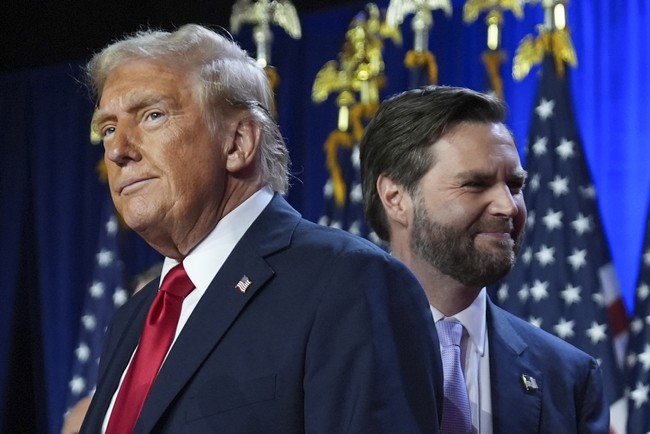
One sleep and less than 24 hours until Monday, January 20, 2025, and the second inauguration of President-elect Donald J. Trump.
There was a time when presidential term limits were treated similarly to what Congress continues to do with the national debt and Social Security: kick the can down the road for the next Congress to deal with. Our first president, George Washington, made the choice to retire after eight years, and other presidents after him followed his lead by only serving two terms. It took 147 years before the two-term precedent set by Washington would be Constitutionally codified, and President Franklin Delano Roosevelt and his unprecedented and never-to-be-repeated four terms in office was the catalyst.
Advertisement
The National Archives’s “Amending America” project shows that presidential term limit motions appeared in Congress over the next 140 years regularly, with the first possible amendment submitted to Congress in 1788 by Thomas Tucker. In his 1897 report to the American Historical Association, Herman V. Ames listed 125 versions of presidential term limit amendments proposed to Congress between 1788 and 1896. “These were brought out chiefly by the fear that the President would use the patronage of his office to secure his reelection,” Ames said. “A large number of the amendments did not propose to change the term of the President as fixed by the Constitution, but to limit the number of times the same person could be chosen President.”
As per usual, the battle of presidential term limits was waged along party lines. One party submitted legislation to create an amendment when they feared that the opposing party’s president would overstay his welcome, and vice-versa. In a 1990 paper, Constitutional scholar Stephen W. Stathis explained:
Stathis writes that by the time the 80th Congress convened in January 1947, at least 200 presidential term limit amendments had been proposed in the House or Senate. But that Congress would be unique in its action to get the amendment to a full vote and the two-thirds majority needed to pass it, thereby sending it to the states for ratification.
The Republican Party had advocated for a presidential term limit amendment in its 1940 and 1944 convention platforms when first Wendell Willkie and then Thomas Dewey ran against Franklin Roosevelt. (The Democrats had added a presidential term limit amendment to its 1912 platform to oppose another Roosevelt—Theodore—when the former President sought a third, non-consecutive term.)
Advertisement
Perhaps it was the tailwinds from the closing war, or the zeitgeist flowed in the right direction, but the 80th Congress somehow found common ground.
The House considered two versions of the amendment. One amendment limited a President to single six-year term; the other limited the President to two four-year terms. The House version with a two-term limit passed in a 285-121 vote barely a month after the new Congress met. Stathis notes that 37 Democrats who voted for the resolution were from southern states.
The Senate and Senator Robert Taft changed the House version to add language related to a Vice President who assumed office having 10 years of eligibility. Nine Senate Democrats from southern states joined with a unanimous GOP Senate Caucus in the Senate vote approving the amendment’s language.
In 1947, Congress approved the language for the 22nd Amendment and it was launched to the states for ratification. This took another four years. The 22nd Amendment was ratified in 1951, going from presidential precedent to Constitutional mandate. Our country is the better for it.
Roosevelt is also the instrument in setting up another presidential precedent: the establishment of powers to the Office of the Vice President. The only role for the vice president of the United States laid out in the Constitution is president of the Senate, in which he presides over this deliberative body and provides the tie-breaking vote where necessary.
Advertisement
It is ironic that former (thank God) President Joe Biden wanted to model his disastrous presidency on Roosevelt’s. Besides both being Democrats, Biden repeated a number of the toxic elements Roosevelt injected into his presidency, including freezing out his vice president. Another terrible commonality is that both Biden and Roosevelt were in failing health, but they had First Ladies and an administration that ran cover for them.
At 63, Roosevelt suffered from extreme high blood pressure and congestive heart failure, and his body was weak from his battle with polio. When Roosevelt died of a stroke in Warm Springs, Georgia on April 12, 1945, less than four months after his inauguration for his fourth term, Vice President Harry S. Truman was sworn in as the president of the United States. However, thanks to Roosevelt’s opaque handling of presidential affairs, Truman had no clue about the essential mechanisms of the office.
Despite his failing health, Roosevelt never informed his vice president on crucial matters. Truman met with Roosevelt a total of eight times between when he was selected as a running mate and when he himself became president.
Roosevelt’s VP, Truman, had no idea that the United States had an atomic weapons program. In the thick of World War II, Truman was not privy to crucial intelligence and was not informed about what was discussed in Roosevelt’s meetings with Great Britain Prime Minister Winston Churchill or any of the other Allied powers.
Advertisement
The fact that vice president is now a significant role is, ironically, thanks to Truman being closed out of the inner workings of Roosevelt’s fourth and final term, only to ascend to the presidency with little prior knowledge.
This gives new meaning to the term flying blind. It is a testament to the man from Independence, Missouri that he ably rose to the monumental task of critical decision-making that brought us victory in World War II and set the stage for a period of peace and prosperity. It was only in Truman’s second term that he even had a vice president. So, Truman made the decision to invest greater powers in the role, refusing to saddle another man, or the nation, with the burden of ignorance, especially in such a critical juncture in the American experience.
Since Truman’s investment in 1949, the vice president has been a part of the president’s cabinet, participating in all cabinet-level meetings. The vice president is also a member of the National Security Council, ensuring he not only receives the national security briefing but also is kept abreast and up to speed on all national security concerns.
From their statements and the intelligence we have received, President Donald Trump and Vice President JD Vance have plans to establish new precedents and invest in change to usher in that new golden age of America.
We’re here for it.
Advertisement

